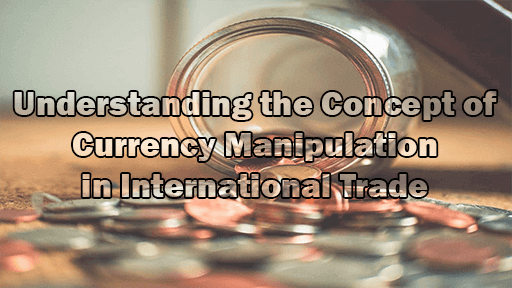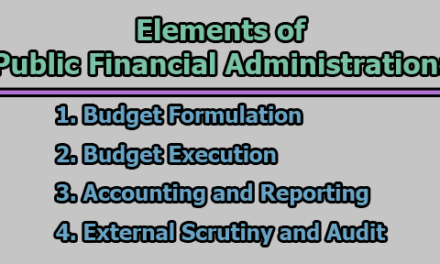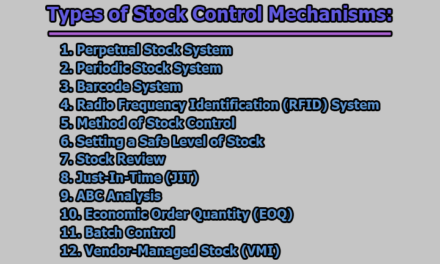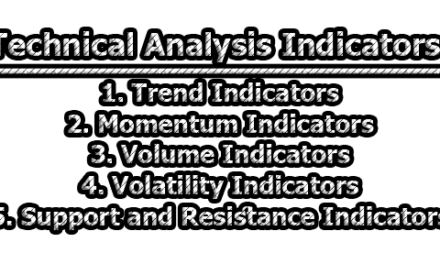Understanding the Concept of Currency Manipulation in International Trade:
Currency plays a pivotal role in international trade, acting as a medium of exchange between countries. The value of a nation’s currency holds significant sway over its foreign trade, providing a tempting incentive for governments to engage in currency manipulation. While currency manipulation is not a legitimate practice, it can be executed strategically within legal norms. In the rest of this article, we will explore the statement “understanding the concept of currency manipulation in international trade”.
What is Currency Manipulation?
Currency manipulation, also known as currency interventions, involves a country’s government altering the exchange rate through monetary or fiscal policies. This is achieved by buying or selling foreign currency in exchange for the domestic currency, influencing the exchange rate and achieving desired economic outcomes.
Objectives of Currency Manipulation:
Governments resort to currency manipulation to achieve various economic objectives, including:
1. Regulating Inflation: One of the primary objectives of currency manipulation is to regulate inflation within a country. Inflation is a crucial economic indicator that measures the general increase in prices of goods and services over time. By intervening in currency markets, governments can influence the exchange rate, subsequently affecting the inflation rate.
When a government seeks to curb inflation, it may manipulate its currency to appreciate against other currencies. A stronger domestic currency makes imported goods and services cheaper, contributing to lower inflation. Conversely, if a government wishes to stimulate inflation to avoid deflationary pressures, it may devalue its currency, making imports more expensive and boosting domestic production.
2. Boosting Exports and Foreign Trade Relations: Enhancing the level of exports and improving foreign trade relations is a key objective behind currency manipulation. Governments may intervene in currency markets to make their country’s products more competitive in the international market. By devaluing their currency, they effectively reduce the cost of their exports, making them more attractive to foreign buyers.
A weakened domestic currency also makes imports more expensive, further incentivizing consumers to choose domestically produced goods. This shift in demand contributes to an improved balance of trade and, in turn, supports economic growth. Countries with a significant export-oriented sector often resort to currency manipulation to gain a competitive edge in the global market.
3. Stimulating Economic Growth: Currency manipulation is frequently employed as a tool to stimulate economic growth. When a government aims to attract foreign investments and promote overall economic development, it may manipulate its currency to create favorable conditions. By setting an exchange rate that attracts foreign investors, the country can experience an influx of capital, leading to increased economic activity.
A strategically devalued currency can make a country’s goods and services more appealing to foreign investors, fostering exports and contributing to the growth of domestic industries. This objective is particularly relevant for developing and underdeveloped countries seeking to accelerate their economic progress.
4. Strategic Development of Key Economic Sectors: Governments may resort to currency manipulation with the specific goal of supporting and developing key sectors of their economy. Some industries are dependent on foreign trade, and by manipulating the currency, governments can provide direct support to these sectors.
For instance, a government might devalue its currency to make imports more expensive, encouraging consumers to choose domestically produced goods. This type of intervention can be strategically employed to boost industries that cannot thrive solely on domestic demand and rely on international markets for growth.
5. Responding to Foreign Depreciation: Currency manipulation is often used as a response to changes in the foreign currency, especially instances of depreciation. When a country’s central bank perceives that its currency is out of sync with the economic growth rate and may have adverse effects, it may intervene in the foreign exchange market.
For example, if a country’s currency faces depreciation against major foreign currencies, the central bank may engage in currency manipulation to stabilize and strengthen its currency. This intervention aims to mitigate potential negative impacts on the economy, such as rising import costs and inflation.
6. Improving Trade Deficit: Addressing and improving the trade deficit is another significant objective of currency manipulation. A trade deficit occurs when a country imports more goods and services than it exports, leading to an imbalance in the balance of payments. Currency manipulation can be utilized to rectify this imbalance by influencing the exchange rate.
Governments may devalue their currency to make exports cheaper and imports more expensive, thus reducing the trade deficit. By encouraging domestic consumers to opt for domestically produced goods, a country can stimulate its own industries and enhance the overall competitiveness of its products in the global market.
However, it’s crucial to note that continuous reliance on currency manipulation to address trade deficits can have negative consequences. Excessive devaluation may lead to an increase in foreign-denominated loans, creating potential economic risks for the country.
7. Reducing Sovereign Debt Burden: Governments may resort to currency manipulation as a strategy to reduce the burden of sovereign debt. If a country has a substantial amount of government-issued debts, weakening the currency can make these debts less expensive in terms of foreign currency.
By strategically devaluing the currency, the government effectively lowers the real cost of servicing its debts. However, this approach must be used cautiously, as global debt often surpasses sovereign debts. Overreliance on currency manipulation to manage debt can undermine the economic position of the country, especially if not accompanied by prudent fiscal policies.
8. Sustaining Economic Policies: Currency manipulation is also employed by governments to sustain various economic policies, particularly those aimed at supporting indigenous industries. For example, a government may want to boost the value of imports to protect and stimulate the growth of strategic domestic industries.
In such cases, the government may manipulate the currency to influence the cost of imported goods, making them more expensive and encouraging consumers to choose domestically produced alternatives. However, this strategy comes with challenges, as prolonged devaluation may lead to other economic issues, such as inflation and disruptions in international trade relations.
Government Intervention Policies in Currency Manipulation:
Government intervention in currency manipulation involves the implementation of various policies and procedures to influence exchange rates and achieve specific economic objectives. These interventions are carried out by central banks or relevant government agencies and can have significant implications for a country’s economic stability and global trade relations. Here, we explore different government intervention policies in currency manipulation.
1. Sterilized Interventions: Sterilized interventions refer to actions taken by the central bank to influence the exchange rate without altering the monetary base of the economy.
Process: The central bank conducts two major transactions. First, it purchases foreign currency bonds using the domestic currency. Simultaneously, it sells domestic currency bonds. This swap results in no net change in the money supply of the economy.
Purpose: Sterilized interventions are often employed when a country aims to impact the exchange rate without causing inflation or deflation. It allows the government to achieve its currency objectives without directly affecting the domestic money supply.
2. Non-Sterilized Interventions: Non-sterilized interventions involve actions that lead to changes in the money supply of the economy.
Process: Similar to sterilized interventions, non-sterilized interventions involve purchasing foreign currency bonds with domestic currency. However, in this case, there is a consequent change in the money supply. The extra supply of domestic currency impacts the exchange rate.
Purpose: Non-sterilized interventions are employed when the government is willing to accept changes in the money supply to achieve its currency objectives. It may be used when a country desires a more direct impact on the exchange rate and is less concerned about potential inflationary or deflationary effects.
3. Indirect Interventions: Indirect interventions bring changes to the exchange rate through measures that do not directly involve currency market transactions.
Process: Common measures include the implementation of exchange controls or capital controls, which restrict the flow of capital in and out of the country.
Purpose: Indirect interventions are often used as emergency control measures, as they can have damaging effects on market confidence and create inefficiencies in the economy. These measures are generally avoided unless deemed necessary to address severe economic challenges.
4. Exchange Rate Pegging: Exchange rate pegging involves fixing a country’s currency to the value of another currency, often a major reserve currency like the U.S. dollar or the Euro.
Process: The central bank actively buys or sells its own currency to maintain the fixed exchange rate. This can involve holding significant reserves of the anchor currency.
Purpose: Exchange rate pegging provides stability and predictability to the domestic currency, making it attractive for international trade. However, maintaining the peg requires continuous intervention and can lead to challenges if economic conditions diverge from those of the anchor currency.
5. Managed Float or Dirty Float: In a managed float or dirty float system, the government allows the currency to fluctuate in the foreign exchange market but occasionally intervenes to influence its direction.
Process: The central bank may buy or sell its own currency in the market to prevent excessive volatility or achieve specific economic objectives.
Purpose: This approach provides flexibility for the currency to respond to market forces while allowing the government to prevent rapid or undesirable currency movements. It strikes a balance between a completely free-floating exchange rate and a fixed or pegged exchange rate.
6. Forward Guidance: Forward guidance involves signaling future monetary policy intentions to influence market expectations and, consequently, the exchange rate.
Process: Central banks communicate their intentions regarding future interest rates, inflation targets, or other relevant economic indicators, shaping investor expectations.
Purpose: Forward guidance can influence market sentiment and guide currency movements. By providing clarity on future policy actions, central banks aim to achieve a more predictable and stable exchange rate environment.
7. Interest Rate Policies: Adjusting interest rates is a common tool used by central banks to influence currency values.
Process: By increasing or decreasing interest rates, central banks can affect the attractiveness of a country’s assets to foreign investors, leading to changes in the demand for its currency.
Purpose: Interest rate policies can be employed to control inflation, stimulate economic growth, or influence the exchange rate. Higher interest rates may attract foreign capital, appreciating the currency, while lower rates may have the opposite effect.
8. Capital Controls: Capital controls involve restricting the movement of funds in and out of a country.
Process: Governments may implement measures such as limits on foreign currency transactions, restrictions on foreign investments, or taxation on capital outflows.
Purpose: Capital controls are used to manage currency volatility, prevent speculative attacks, and maintain economic stability. However, these measures can be controversial, as they may hinder the free flow of capital and international investment.
Examples of Currency Manipulation:
Here are some notable cases where countries engaged in currency manipulation to achieve specific economic goals:
1. Swiss National Bank (2011-2015): The Swiss National Bank executed a currency manipulation strategy between 2011 and 2015. During this period, the central bank set a minimum exchange rate for the Euro and Swiss Franc. The objective was to prevent the Swiss currency from strengthening beyond a predetermined limit. This policy was sustained for three and a half years before the minimum exchange rate was eventually lifted.
The Swiss National Bank’s intervention had varied consequences for different sectors of the economy. While certain sectors benefitted from a stable exchange rate, others faced negative consequences. The example illustrates how currency manipulation can be a nuanced strategy with both positive and negative impacts on different economic segments.
2. China: China has been a focal point of discussions on currency manipulation due to its persistent efforts to maintain a trade surplus. Critics argue that China’s currency policies amount to impermissible “currency manipulations,” resembling an export subsidy. The Chinese government has consistently intervened in currency markets to prevent the appreciation of its currency, ensuring the competitiveness of its exports.
This strategic manipulation has allowed China to sustain a trade surplus for several years, but it has also sparked calls for international regulatory actions. The case of China highlights the potential long-term consequences of continuous currency interventions and their impact on global trade dynamics.
3. Reserve Bank of India (RBI): As a response to China’s undervaluation of its currency, various countries, including India, have engaged in currency manipulations or interventions. The exchange rate regime adopted by China had widespread implications for global economies, prompting other nations to adjust their currency strategies.
The Reserve Bank of India, as an example, might have undertaken currency interventions to safeguard its own economic interests in the face of China’s currency policies. This underscores the interconnectedness of global economies and the ripple effects of currency manipulations across different regions.
4. Japanese Yen (1990-2000): During the period from 1990 to 2000, Japan faced a deflationary situation characterized by stagnant production, rising unemployment, and the failure of important banks. To address these challenges, policymakers in Japan decided to intervene in the currency exchange rate.
The Ministry of Finance, in collaboration with the central bank, conducted currency manipulations to stimulate the economy and pull the country out of deflation. The intervention aimed to make Japanese exports more competitive in the global market by strategically devaluing the yen. This example demonstrates how currency manipulation can be utilized as a targeted tool to address specific economic conditions.
5. Russian Ruble: The central bank of Russia resorted to currency devaluation as a means to improve its macroeconomic factors. By engaging in currency manipulation, Russia sought to enhance economic growth. This case emphasizes how currency interventions can be employed to achieve broader economic objectives, particularly in emerging economies.
The Russian example also highlights the potential trade-offs involved in currency manipulation. While it may contribute to short-term economic growth, there are risks and challenges that must be carefully considered to avoid negative consequences in the long run.
Implications and Criticisms of Currency Manipulation:
While currency manipulation may serve specific economic objectives, it is not without its implications and criticisms. Continuous and excessive use of currency manipulation can lead to several challenges and negative consequences for a country’s economy.
1. Trade Imbalances: One of the main criticisms of currency manipulation is its potential to exacerbate trade imbalances. While a country may manipulate its currency to improve its trade position, the impact on global trade relations can be contentious. Trading partners may perceive currency manipulation as an unfair trade practice, leading to tensions and disputes.
For example, countries with manipulated currencies may experience an increase in exports at the expense of their trading partners. This imbalance can result in trade tensions and calls for corrective measures, such as tariffs or other trade restrictions.
2. Foreign-Denominated Loans: The continuous use of currency manipulation, especially through devaluation, can lead to an increase in foreign-denominated loans. When a country’s currency is devalued, it becomes more expensive to repay debts denominated in foreign currencies. This situation can create a burden on the country’s economy, potentially leading to financial instability.
For instance, countries that frequently resort to devaluation may find themselves accumulating significant amounts of foreign-denominated debt, posing risks to their economic stability. It becomes essential for policymakers to strike a balance between achieving short-term economic objectives and avoiding long-term financial vulnerabilities.
3. Inflationary Pressures: Currency manipulation, particularly through devaluation, can contribute to inflationary pressures in an economy. When a country deliberately weakens its currency to boost exports, the cost of imported goods rises. This increase in import costs can lead to higher overall prices, affecting consumers and potentially undermining the purchasing power of the domestic currency.
While controlled inflation may be an acceptable economic outcome, excessive and uncontrolled inflation can have detrimental effects on an economy. Policymakers need to carefully consider the trade-offs between short-term economic goals and the long-term stability of the economy.
4. Market Confidence and Inefficiencies: Some forms of currency manipulation, such as exchange controls or capital controls, can lead to a reduction in market confidence and the development of inefficiencies in the operations of the economy. These measures are often seen as emergency control measures and are generally avoided due to their potential to damage the overall economic environment.
For example, implementing strict exchange controls can hinder the free flow of capital and disrupt normal market operations. Such interventions may be detrimental to a country’s reputation in international financial markets, affecting investor confidence and hindering economic growth.
In conclusion, currency manipulation has become a prevalent practice, particularly among emerging economies, impacting international trade dynamics. Despite its potential benefits, it disproportionately affects specific sectors of the economy. The examples provided underscore the complexity and global implications of currency manipulation, making it a significant topic of discussion in the realm of international trade. Policymakers and regulatory bodies must carefully navigate these practices to ensure fair and transparent economic relations on the global stage.
Frequently Asked Questions (FAQs):
What is currency manipulation?
Currency manipulation, also known as currency interventions, refers to the strategic actions taken by governments or central banks to influence the exchange rate of their national currency. This is achieved through various monetary or fiscal policies, with the aim of achieving specific economic objectives such as regulating inflation, boosting exports, or stimulating economic growth.
How is currency manipulation accomplished?
Governments can manipulate currency through interventions in the foreign exchange market. They may buy or sell their own currency in exchange for foreign currency to influence the exchange rate. These interventions can be conducted through sterilized or non-sterilized methods, involving changes or no changes in the money supply, respectively.
Why do countries engage in currency manipulation?
Countries resort to currency manipulation to achieve a variety of economic objectives. Some common reasons include regulating inflation, improving exports and foreign trade relations, stimulating economic growth, supporting strategic sectors, responding to foreign currency changes, and addressing trade deficits.
What are the potential benefits of currency manipulation?
Currency manipulation can provide certain short-term benefits to a country, such as making exports more competitive, boosting economic growth, and addressing trade imbalances. It allows governments to have some control over their exchange rates, influencing the attractiveness of their currency in international trade.
What are the risks and challenges associated with currency manipulation?
While currency manipulation may offer short-term advantages, it comes with risks and challenges. These include potential trade imbalances, inflationary pressures, negative impacts on market confidence, and the accumulation of foreign-denominated debts. Excessive reliance on currency manipulation can lead to long-term economic vulnerabilities.
How do governments intervene in currency manipulation?
Governments employ various policies and procedures to intervene in currency manipulation. Some common methods include sterilized and non-sterilized interventions, exchange rate pegging, managed floats, forward guidance, interest rate policies, and capital controls.
Are there examples of countries engaging in currency manipulation?
Yes, several countries have been accused or known to engage in currency manipulation. Examples include China, which has been criticized for maintaining a trade advantage through its currency policies, and Japan, which intervened in its currency exchange rate during a deflationary period. Each case provides insights into how currency manipulation can be utilized for specific economic goals.
How does currency manipulation impact international trade?
Currency manipulation can significantly impact international trade dynamics. It can influence the competitiveness of a country’s exports, affect trade balances, and lead to tensions between trading partners. The interconnected nature of global economies means that currency manipulation has implications beyond the borders of individual nations.
What role do central banks play in currency manipulation?
Central banks often play a central role in currency manipulation. They are responsible for implementing monetary policies and conducting interventions in the foreign exchange market. Central banks use tools such as interest rate adjustments, currency purchases or sales, and communication strategies to influence exchange rates and achieve economic objectives.
Is currency manipulation legal?
The legality of currency manipulation is a complex and debated issue. While some forms of currency manipulation may violate international trade agreements, others may be within legal norms. The distinction often depends on the specific actions taken by the government and whether they align with the rules established by international bodies such as the International Monetary Fund (IMF).

Library Lecturer at Nurul Amin Degree College










